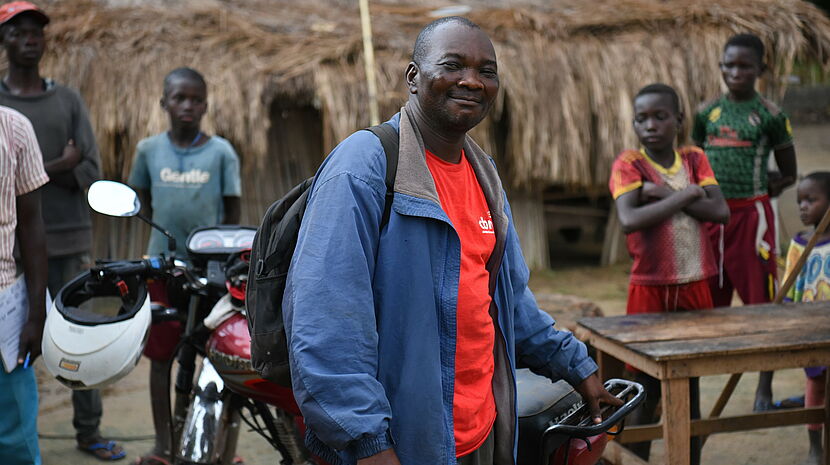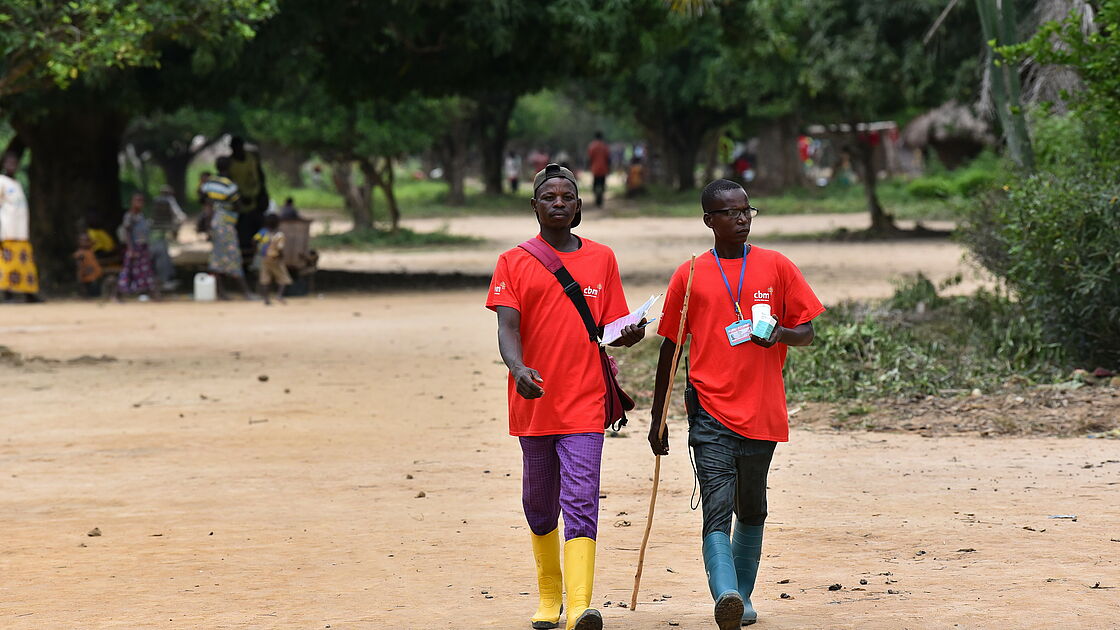Fighting River Blindness in Sub-Saharan Africa

Robert embarks on the long journey to distribute Mectizan in remote villages in northern DRC.
©CBM
Journey with us to the heart of the Democratic Republic of Congo (DRC), where community members take up the fight against river blindness.
In the remote village of Mboko in the Bili Health Zone in the Democratic Republic of Congo (DRC), a group of health workers, volunteers, and international partners like CBM have come together to accomplish a unique mission: eliminate river blindness.
Robert, a Community Health Worker at the Bili Health Zone, tells of the arduous journey to bring the drug from the capital to the remotest villages. The challenges are many. Torrential rains, broken bridges and treacherous roads make the day's journey on a motorbike a dangerous adventure. But he is willing to take on the journey to break the cycle of infection and reduce the number of blind people in his community.
A Pan-African Perspective
Mboko's story is not an isolated case. Across sub-Saharan Africa, river blindness is a scourge that affects the most vulnerable. In places like North Ubangi, the local economy is closely linked to the river, making the community vulnerable to the black flies that spread the disease. The result? A socio-economic burden that goes beyond health, trapping communities in a cycle of poverty and disease.
River blindness, or onchocerciasis, is a devastating disease that affects millions of people worldwide. It is caused by a parasitic worm and transmitted by repeated exposure to bites of infected black flies. It can lead to severe skin infections, impaired vision and eventually total blindness. It is a global problem affecting different regions, especially in sub-Saharan Africa, where most cases occur.
The Power of Local Training:

Community Health Workers Martin and Jean distribute Mectizan from door to door in DR Congo.
©CBM
In places like Northern Ubangi in DRC, community health workers offer a glimmer of hope.
Robert does not just drop off the medication and leave. He trains local nurses and volunteers like Jean Merci and Martin Ngambelipu. These volunteers are driven by the suffering they have witnessed in their own neighbourhoods. They measure, distribute and educate, ensuring that the medicine reaches those who need it most.
In 2022, CBM supported 5.9 million treatments for onchocerciasis in South Sudan. The organisation is now focusing on eliminating onchocerciasis in 30 co-endemic counties.
We have also supported 25 million treatments against river blindness in Burundi from 2006 to 2022. CBM also conducted surveys in villages near rivers where black flies were found, as these flies are indicators of transmission of the disease.
Beyond River Blindness: The Future of NTD Programs:
While countries like the Democratic Republic of Congo are making progress in eliminating neglected tropical diseases (NTDs), the focus is shifting to sustainability. How can these robust NTD programmes be integrated into national health systems?
CBM's approach to sustainability of neglected tropical diseases (NTD) programmes is rooted in strengthening country ownership and working closely with ministries of health in endemic countries such as South Sudan, Nigeria and the Democratic Republic of Congo.
The organisation focuses on comprehensive interventions that go beyond the mere administration of mass drug administrations, encompassing broader health needs such as eye care, disease management, rehabilitation and mental health support.
CBM's initiatives are designed to be long-term, targeted and evolutionary, and aim to build capacity and expertise within national health systems.
In Nigeria, for example, CBM works closely with government health structures to ensure that supply chain management, infrastructure, equipment and technical training are provided within existing systems. This collaborative approach has led to increased financial commitment from the government to address NTDs, including river blindness.
“We want our work in NTDs to do more than simply provide mass drug administrations, although these are, of course, crucial, but to look, in addition, at the wider picture of peoples’ health needs. There is a fair way to go before we achieve this, but we are making progress in the right direction,” emphasises Dr Babar Qureshi, Director of CBM’s Inclusive Eye Health initiative, in our latest NTD Annual Report.